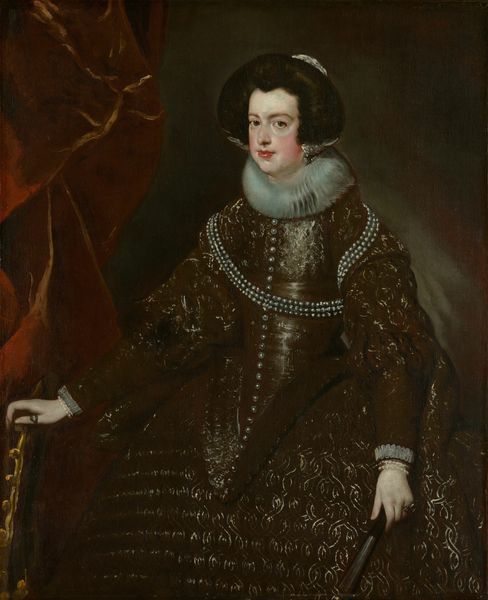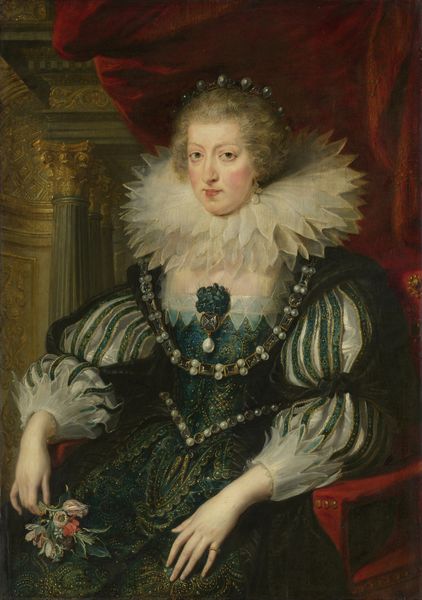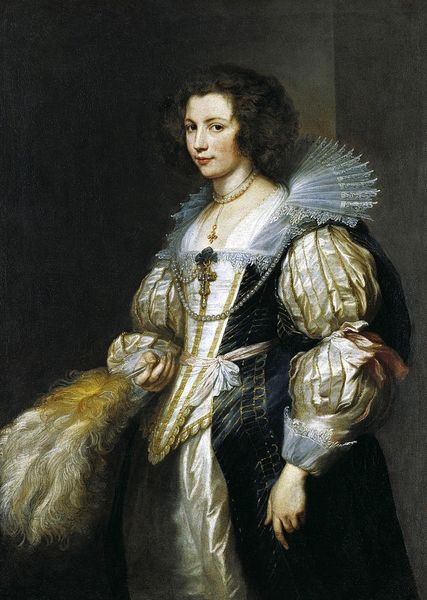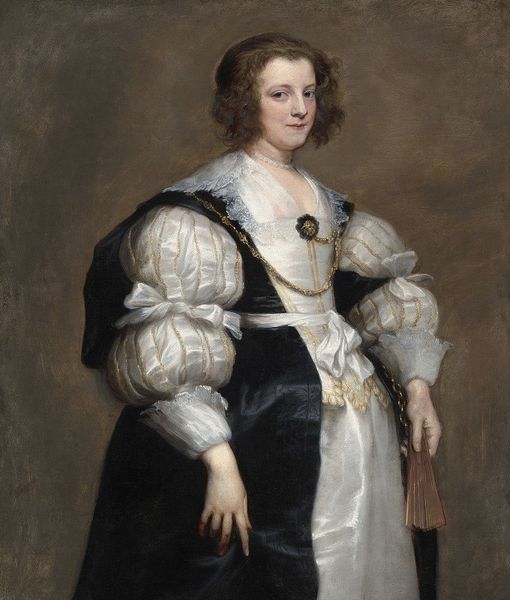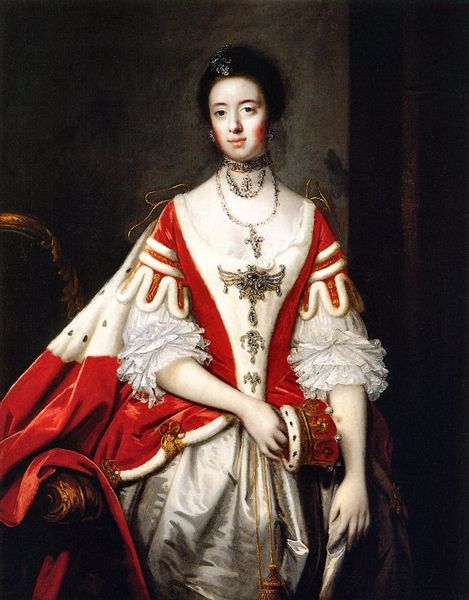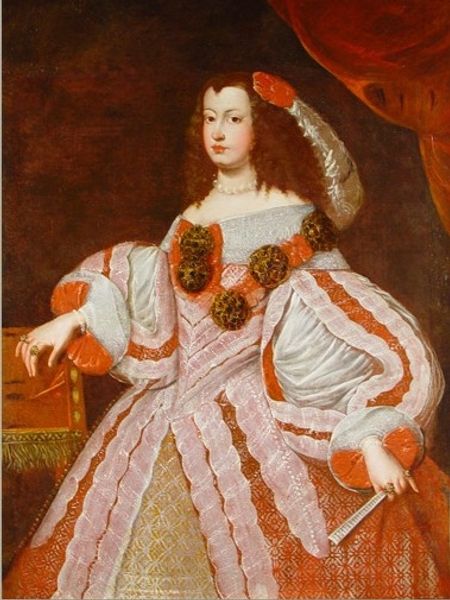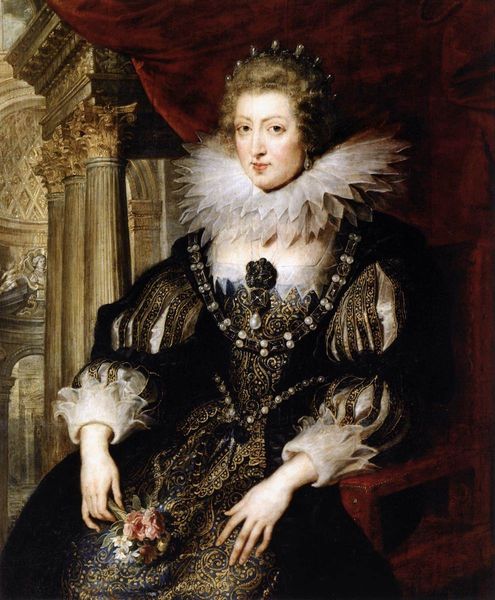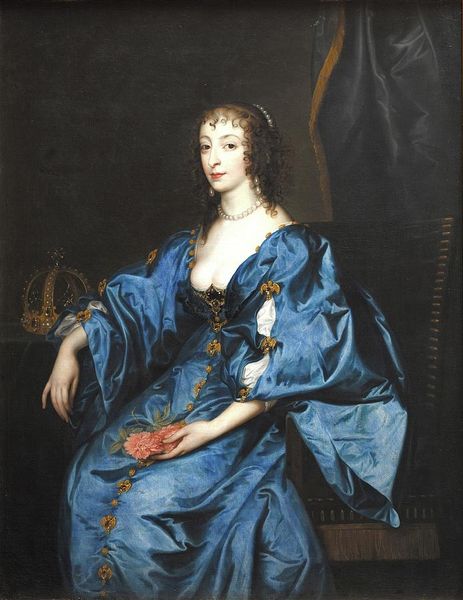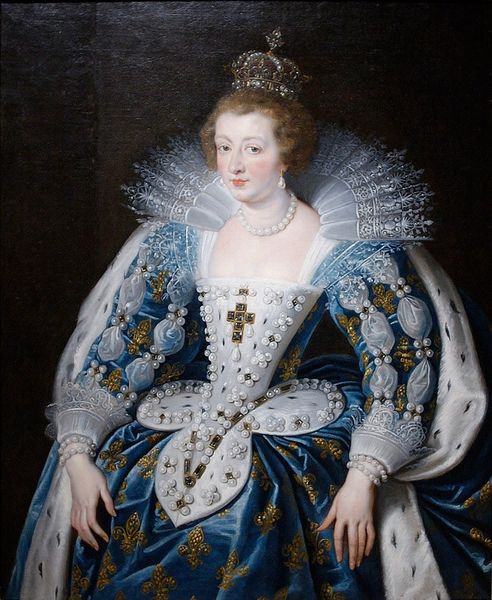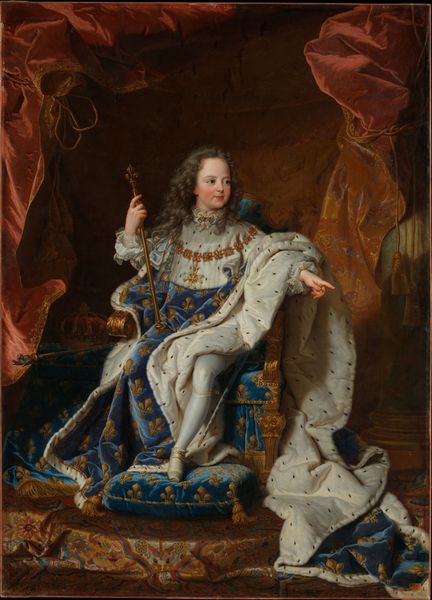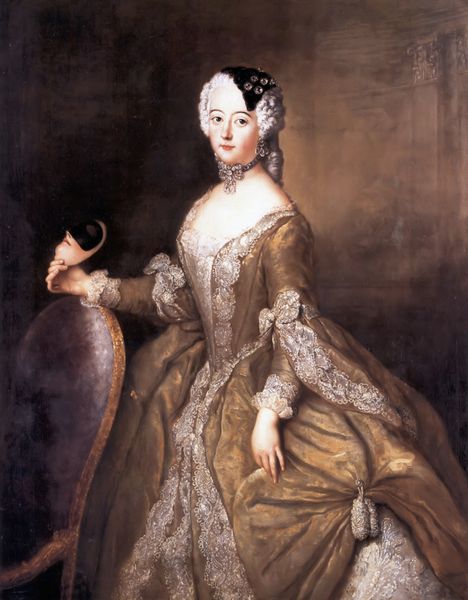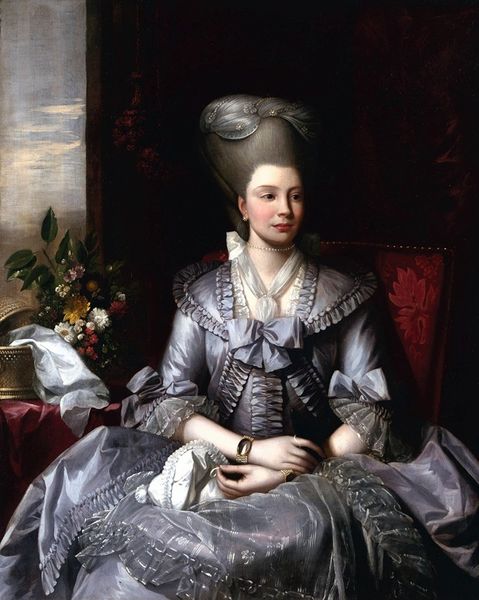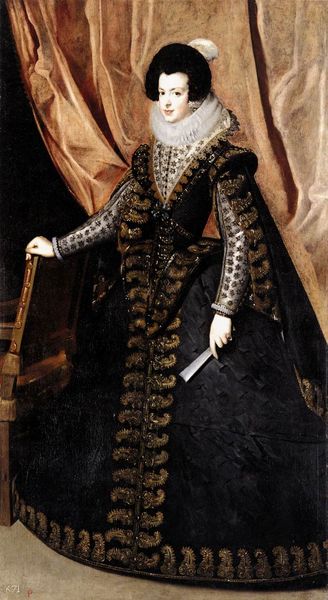
painting, oil-paint
#
portrait
#
baroque
#
painting
#
oil-paint
#
oil painting
#
history-painting
#
academic-art
#
realism
Copyright: Public domain
Editor: Here we have what is believed to be Diego Velázquez’s "Portrait of Queen Mariana of Austria," in oil paint. There's something so captivating, and almost imposing about her figure taking up so much space in the composition. How should we understand this depiction of royalty? Curator: This portrait offers a fascinating glimpse into the world of court portraiture and its function in maintaining power. Think about the role of the artist within the Spanish court. Velázquez wasn't simply painting a likeness; he was constructing an image of the Queen, and, by extension, the Spanish monarchy. What visual cues suggest her status and power? Editor: The ornate dress, of course, and the elaborate headdress. It’s a lot! And the stark background, it doesn't offer much context. Curator: Precisely! Consider this painting within the context of the Habsburg dynasty, and the tradition of portraiture used to project authority. These portraits served a political purpose, circulating throughout the empire to reinforce the Queen's image. Even her rigid posture contributes to that carefully constructed presentation. The dark clothing could indicate a period of mourning too. The clock on the table beside her alludes to her diligence in ruling, but also acts as a symbol of time. Editor: So, it’s less about capturing her true self and more about presenting a specific persona, regardless of emotion. It is more about the politics of image making. Curator: Exactly. Think about the patronage system and the artist's position within it. Velázquez, as a court painter, operated within very specific constraints and expectations. His genius lies in navigating those constraints while still creating compelling images. This image became a brand. Editor: I see it. So the portrait is less a window into a person and more of a reflection of the systems of power that created it. Curator: And also of the dialogue between painter and patron that produced a highly aestheticized solution within strict cultural constraints. These types of portraits had very rigid sets of rules to adhere to. They certainly speak volumes about the art world, the court and politics during that time.
Comments
No comments
Be the first to comment and join the conversation on the ultimate creative platform.
